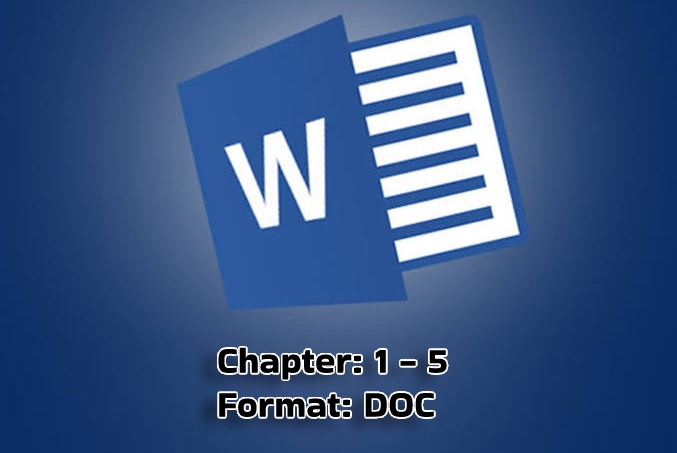Description
CHAPTER ONE
1.0 INTRODUCTION
1.1 BACKGROUND OF THE STUDY
The indiscriminate location of auto maintenance workshops and operation of industrial
and home generators has resulted in massive pollution of soils in such locations. The
waste engine oil penetrate deep down affected soils by the effect of gravity. Several
works have been carried out on WEO and crude oil contaminated soils.
Hashim, M.A. and Sabiu, A.F.(2013), investigated the effects of Crude Oil Low Point
Pour Fuel Oil (LPFO) and Vacuum Gas Oil contamination on the geotechnical
properties of sand, clay and lateritic soils. They established that shear strength of clay
soil increased with LPFO contaminations at 2% and 4% LPFO, however, at 6% LPFO
contamination and 2-6% LPFO contamination, the shear strength of clay increased.
The CBR values for the clay soil decreased with LPFO contamination. Other
deleterious changes included an increase in consolidation settlement for LPFO
contaminated laterite. The consolidation settlement of the contaminated clay soil
generally decreased with all contaminants. Meegoda, N. J. and Ratanweera P. (1994),
examined the compressibility of contaminated fine-grained soils by consolidation test.
Meegoda, N. J. and Ratanweera P. (1994), also carried out geotechnical investigation
of oil contaminated Kuwaiti Sand as a result of the destruction of Kuwaiti’s oil
production facilities at the end of the Gulf war. The results of their findings revealed a
reduction in permeability and strength and an increase in compressibility with oil
contamination.
Meegoda, N. J. and Ratanweera P. (1994), studied the effect of motor oil
contamination duration on over consolidated clay and reported decreases in Atterberg
properties, unconfined compression strength but increases in the permeability,
compression and swell potential of the contaminated soil. Furthermore, they observed
that motor oil contamination led to close packing of the clay particles.
Authors in [5] and [6] corroborated this view. They also concluded that the
compression behaviour of montrmorillonite indicated that the particles tend to
coagulate and to behave like granular materials in the presence of organic
contaminants. [7], observed that Liquid Limit and consolidation parameters of highly
plastic clay tend to decrease in the presence of organic pollutants.
The engineering properties of oil contaminated sand were investigated by [8]. They
reported decreasing values of strength, permeability, MDD, OMC and Atterberg
Limits values with increase in contaminant content.
Tests to determine the geotechnical properties of oil contaminated sands were carried
out by [9] and [10]. Results indicated that the compaction characteristics are influenced
by oil contamination. The suitability of petroleum contaminated soils in road
construction was studied by [11]. They found out that in construction application
including stabilizing the soil with cement, mixing it with crushed stone aggregate for
use in road bases or sub bases, and using it for as a fine aggregate replacement in hot
mix asphalt concrete, there was good potential for use in road construction..
[12], investigated the effect of waste engine oil contamination on the plasticity,
strength and permeability of lateritic clay. They concluded that (i) contamination of the
lateritic clay with increasing percentage of waste engine oil resulted in progressive
increase in plasticity index of the soil, thus making the soil less workable,
(ii) Optimum Moisture Content and Maximum Dry Density, unit weight of the
contaminated soil decreased with increasing percentage of waste engine oil in the soil.
(iii) Surprisingly, CBR (soaked and un-soaked) values of the contaminated soil were
greater than those of the uncontaminated soil.
(iv) The permeability of the soil decreased with increasing content of the waste engine
oil.
(v) They recommended stabilizing the waste engine oil contaminated lateritic clay
before using it for construction purposes.
Also, authors in [10] – [13] also studied the effect of waste engine oil contamination on
different types of soil. [10] concluded that the Atterberg Limits of unconfined
compressive strength of an over consolidated clay decreased while the coefficient of
permeability increased with increasing motor oil content.[13] found out that the
OMC, MDD and unconfined compressive strength and CBR of a lateritic soil
decreased with the waste engine oil content of the soil.
[14] , investigated the effect of crude oil polluted soils and concluded that the Shear
strength, permeability and OMC and MDD of the crude oil polluted soils decreased as
the content of the crude oil increased. However, the CBR increased as the crude oil
content increased. Therefore crude oil polluted soils can be used as base and sub base
for roads and air-field construction.
[15] , investigated the geotechnical properties of waste engine oil contaminated
laterites. The result showed a general decrease in OMC, Liquid limits and
Permeability. They observed an increase in shear strength, MDD and CBR.
This study investigated the effects of waste engine oil on geotechnical properties of
clay soils.
1.2 AIM OF THE STUDY
This paper entails experimental investigation of the effects of waste engine oil
contamination of a lateritic clay soil on its plasticity, compaction characteristics,
strength and permeability.
1.3 SCOPE OF THE STUDY
AN estimated 200,000 m 3 of waste engine oil is annually generated in Nigeria. It is
sometimes reused for suppressing dust, wood preservation, automobile spare-parts’
rust prevention, lubricating formwork and mould; as fuel for industrial boilers, fuel for
bakery furnace, weed killer, hydraulic oil and as gear oil – when mixed with grease [1].
Despite these areas of application, more waste engine oil is still indiscriminately
disposed on land. This is of major environmental concern because such disposal has
the potential to pollute groundwater, surface water, reduce soil nutrients available to
plants and alter the structural behaviour of the soil on which they are disposed.
1.4 LIMITATION OF THE STUDY
The experiment was carried out by Varying percentages of (0%, 3%, 6%, 9% and 12%)
of WEO were mixed with clay soil as a simulation of the contamination, which was
used to determine the specific gravity, plastic limit, optimum moisture content,
maximum dry unit weight, and permeability of the soil
1.5 PROJECT ORGANISATION
The work is organized as follows: chapter one discuses the introductory part of the
work, chapter two presents the literature review of the study, chapter three
describes the methods applied, chapter four discusses the results of the work,
chapter five summarizes the research outcomes and the recommendations.

